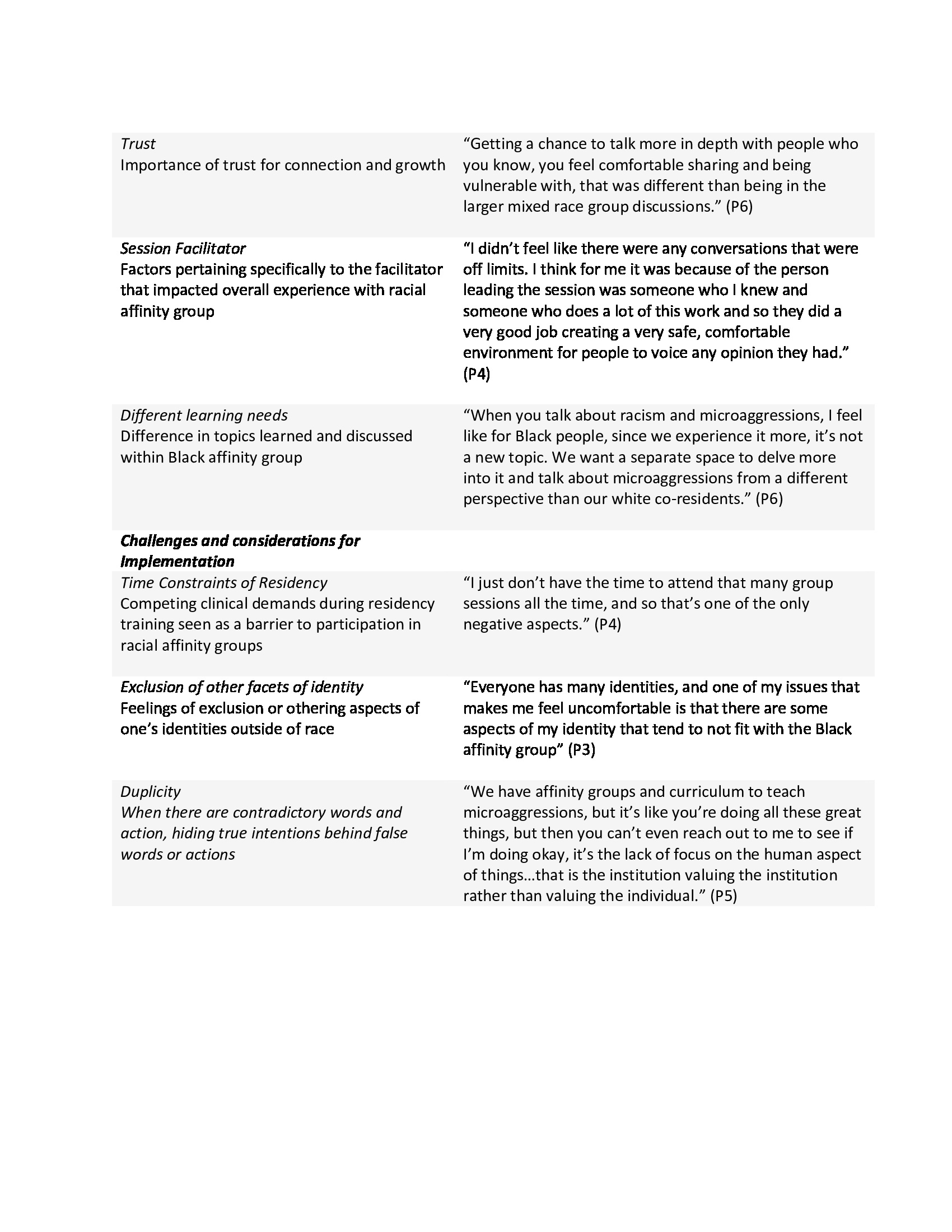Medical Education: Diversity, Equity & Inclusion
Medical Education 8: Diversity, Equity, & Inclusion 2
559 - Black and African American Residents’ Experiences of Racial Affinity Groups in a Pediatric Training Program
Saturday, April 29, 2023
3:30 PM - 6:00 PM ET
Poster Number: 559
Publication Number: 559.23
Publication Number: 559.23
Desiree A. Yeboah, Seattle Children's, Seattle, WA, United States; Sahar N.. Rooholamini, University of Washington School of Medicine, Seattle, WA, United States; jimmy beck, seattle childrens, Seattle, WA, United States; Courtney A. Gilliam, Cincinnati Children's Hospital Medical Center, Cincinnati, OH, United States; Abena Knight, University of Washington School of Medicine, Seattle, WA, United States; H. Mollie Grow, University of Washington School of Medicine, Seattle, WA, United States; Jason Deen, University of Washington, Department of Pediatrics, Seattle, WA, United States
.jpg)
Desiree A. Yeboah, MD (she/her/hers)
Fellow
Seattle Children's
Seattle, Washington, United States
Presenting Author(s)
Background: Racism, discrimination, and microaggressions negatively impact the learning environment for underrepresented in medicine (URiM) trainees. Racial affinity groups are essential to residency inclusion and anti-racism efforts. This is the first study to describe the impact of racial affinity groups for Black and African American pediatric residents.
Objective: To explore 1) the experiences of Black and African American pediatric residents participating in racial affinity groups during training and 2) residents’ perceptions of how participation in racial affinity groups shapes their experiences in the learning environment.
Design/Methods: We conducted 12 semi-structured interviews with Black and African American pediatric residents and graduates from a tertiary care children’s hospital who participated in at least 1 racial affinity group experience during training. We utilized interpretative phenomenology as the methodology and critical race theory as the theoretical framework to inform our interview guide and analysis. We derived individual case themes from deep immersion and analysis, then developed group themes considering connections and discrepancies across multiple cases. Drawing on hermeneutic phenomenological theory and reflexivity, our perspectives guided the interpretation of each resident’s experience.
Results: Four group themes identified in our analysis include (1) collective processing, (2) empowerment, (3) forming a connection, and (4) challenges with implementation (Table). Most residents acknowledged experiencing affinity groups as a collective space to openly share their individual experiences of racial microaggressions and receive affirmation from their peers. Residents also emphasized a sense of empowerment to bring awareness to solutions and concrete tools to address microaggressions. Trust among peers, session timing, and effective facilitation were essential to connection. Time constraints and complexities of intersecting identities apart from race were challenging aspects of the affinity groups.
Conclusion(s): Narratives of collective processing, empowerment, and forming connection were consistent elements of the lived experience for Black and African American pediatric residents participating in racial affinity groups. Residency programs should be mindful of trainees’ intersecting identities and be prepared to address these complexities in affinity groups. Future research could involve residents from other racial and ethnic backgrounds and residents in other specialties to better understand their experiences participating in racial affinity groups.
.jpg)

